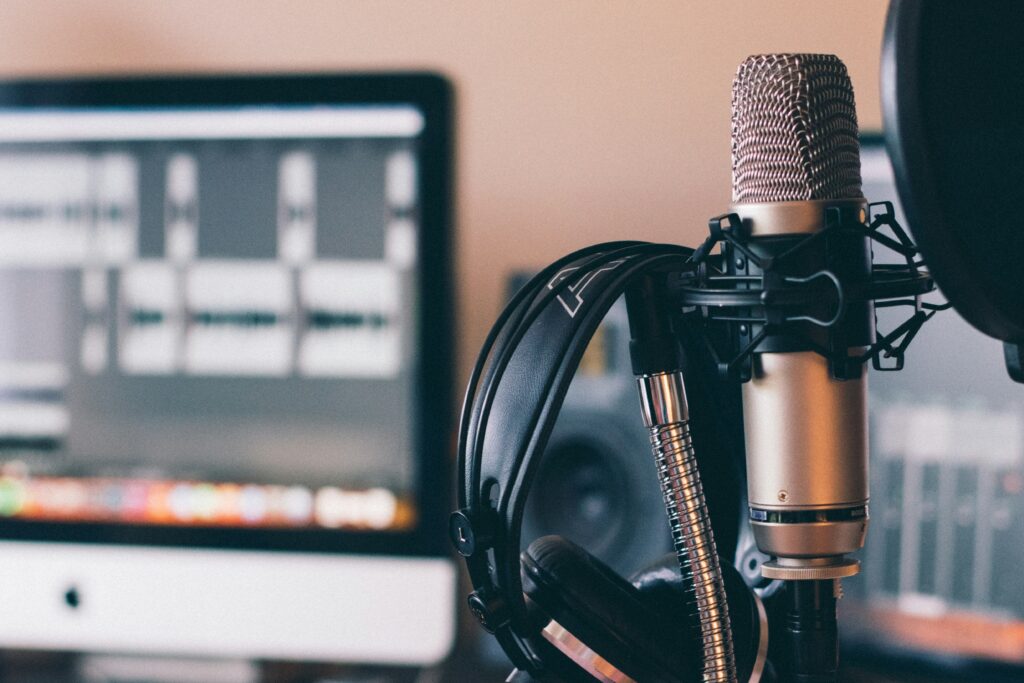In dialogue design, I specialize in refining and enhancing raw audio to deliver polished, expressive results.
Below you’ll find before-and-after examples, along with notes on the creative techniques and processing applied.
Example #1
This line features a magician-type character with a trickster, mysterious tone. I cleaned the raw audio and removed unwanted noise, then added subtle reverse effects before the speaking vocals. I layered multiple pitch shifts that move up and down throughout the line, creating a more sinister, dynamic feel rather than a static pitch. Panning was adjusted for unpredictability, and reverb was applied to make the voice feel like it travels through dimensions. Additional effects were added to enhance the character’s supernatural quality while ensuring clarity and cohesion.
Example #2
This line features an ancient goddess with a presence that is both commanding and ethereal. I cleaned the raw audio and removed unwanted noise, then applied EQ to remove low-end rumble for clarity. I layered multiple pitch-shifted versions of the same audio file to create harmonious textures that enhance the mystical quality of her voice. Subtle reverse effects were added, and reverb was applied to make it feel as though her voice spans vast, timeless spaces. Additional effects were incorporated to bring out the character’s divine energy while maintaining clarity and cohesion.
Example #3
This line features a speaking beast, full of grumbles and growls that give it an unsettling presence. I cleaned the raw audio and applied EQ to remove unwanted frequencies and ensure the vocal maintained continuity without cracking. Three layers were used to create a rich and immersive sound: the main layer was pitch-shifted down to give the beast a menacing tone, a second layer emphasized deep bass frequencies to enhance the sense of threat, and a third quieter layer added subtle depth and texture. The combination of these layers, carefully blended, creates a vocal performance that feels alive and tangible, immersing the listener in the beast’s character.
Example #4
This line features a robot voice, designed to sound precise, mechanical, and slightly uncanny. The original recording consisted of two separate takes with differing audio levels, noise profiles, and EQ characteristics. I cleaned both takes, adjusted levels, and unified EQ and noise reduction so they sound like a single, continuous performance. Multiple layers were used to create a consistent, rich robotic tone. Auto tune was applied to achieve a monotone, synthetic quality, while stereo splitting and shaping gave the voice spatial definition and presence. Each element was carefully blended to maintain clarity while enhancing the character’s mechanical personality, resulting in a vocal that feels both artificial and immersive.
Example #5
This line demonstrates clean dialogue correction without additional effects. I removed background noise, applied EQ for clarity, balanced levels, and used a de-esser to reduce harsh sibilance. The goal was to deliver a polished, natural performance while preserving the original character’s voice.
Techniques Highlighted
These examples demonstrate the range of my work in dialogue and vocal editing, from creative character voices to precise technical corrections. Each project highlights a different approach, whether it’s layering, pitch manipulation, spatial effects, or maintaining clarity across multiple takes. My goal is always to enhance the character’s personality and immerse the listener, while ensuring professional, polished results.
Below is a summary of the key techniques I apply across all examples, showcasing the skills I bring to every project. For more about my work, visit the About and Contact pages to learn about my approach and how we can collaborate.
- Dialogue Continuity Editing – Seamlessly merging multiple takes for smooth performance.
- Vocal Tuning & Autotune – Achieving tonal consistency and stylistic character.
- De-Essing & Sibilance Control – Reducing harshness in vocals for a polished sound.
- Dynamic Effects Processing – Applying distortion, reverse, modulation, or creative FX where appropriate.
- Character-Driven Audio Design – Tailoring techniques to enhance personality and emotion of each line.
- Noise Removal & Cleaning – Removing background noise, clicks, and unwanted sounds.
- EQ Shaping – Adjusting frequencies for clarity, balance, and character emphasis.
- Pitch Shifting & Layering – Creating depth, texture, and harmonic richness.
- Reverb & Spatial Effects – Adding dimensionality and immersion to the audio.
- Stereo Imaging & Panning – Enhancing spatial placement and movement.
